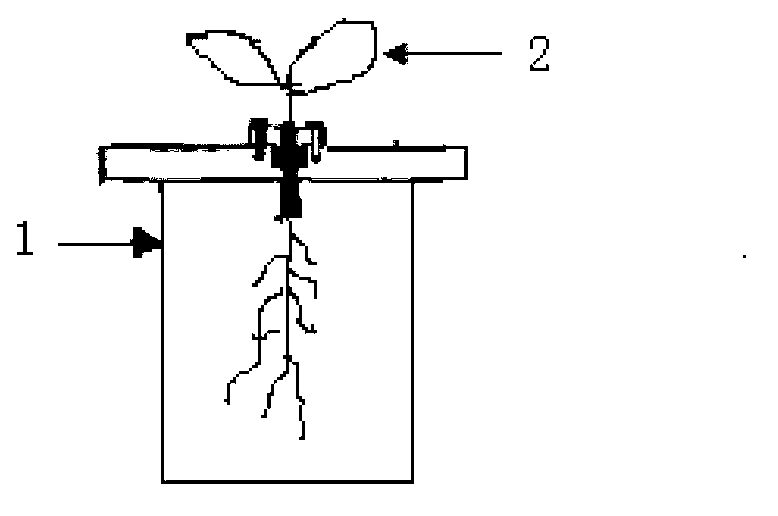Method for detecting mineral nutrient cycling from cotton seedling stage to cotton flowering and boll-forming stage by applying pressure
A technology for boll stage and cotton, applied in the field of plant mineral nutrient testing, can solve the problems of dilution of xylem sap, inability to accurately reflect plant physiological activities, and no research report on application technology, and achieve the effect of highlighting technological progress.
- Summary
- Abstract
- Description
- Claims
- Application Information
AI Technical Summary
Problems solved by technology
Method used
Image
Examples
Embodiment
[0028] Take cotton cultivation to flowering and boll stage as an example;
[0029] 1. Experimental conditions and transplanting of cotton seedlings:
[0030] The conditions of the plant growth room: the day and night temperature is 25°C, the light intensity is 230μE·m-2·s-1, the light time is 14h·d-1, keep ventilation and sufficient light.
[0031] After the cotton seeds are sterilized, use the filter paper method to develop: spread 3 layers of filter paper in a petri dish, drip water to make it moist, put the seeds on top, cover the seeds with 3 layers of filter paper, drip water to make it moist, cover the petri dish, and put it on the In the incubator, keep a constant temperature of 25°C, add water twice a day, and the amount of water added should be controlled so that the filter paper is not dry and there is no water accumulation in the petri dish. Cotton seeds can germinate in 3 days. When the seed root germinates to 3cm and the two cotton leaves are in one center, they ...
PUM
 Login to View More
Login to View More Abstract
Description
Claims
Application Information
 Login to View More
Login to View More - R&D
- Intellectual Property
- Life Sciences
- Materials
- Tech Scout
- Unparalleled Data Quality
- Higher Quality Content
- 60% Fewer Hallucinations
Browse by: Latest US Patents, China's latest patents, Technical Efficacy Thesaurus, Application Domain, Technology Topic, Popular Technical Reports.
© 2025 PatSnap. All rights reserved.Legal|Privacy policy|Modern Slavery Act Transparency Statement|Sitemap|About US| Contact US: help@patsnap.com



